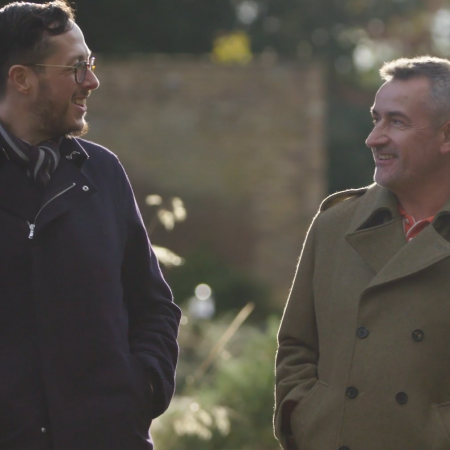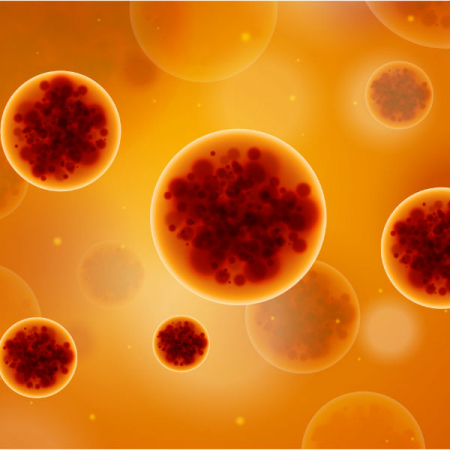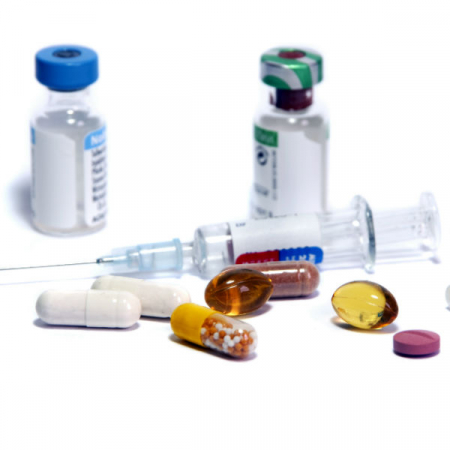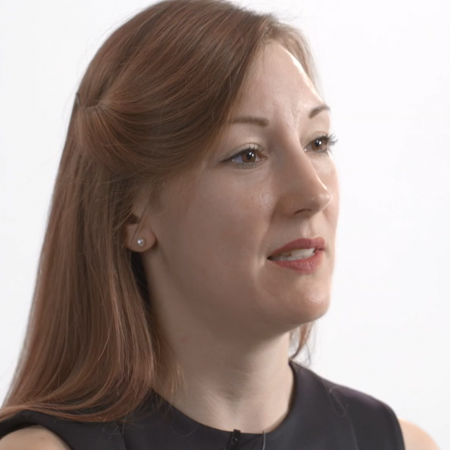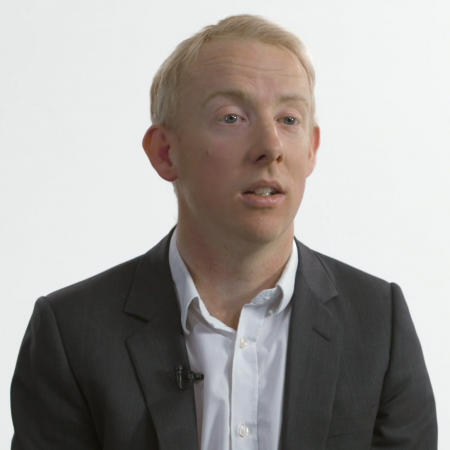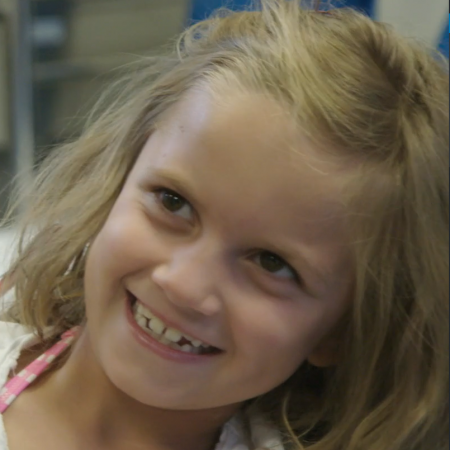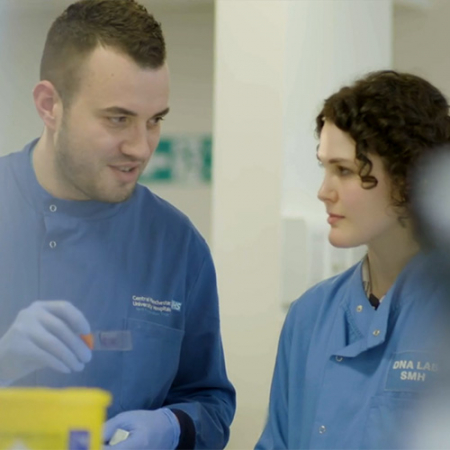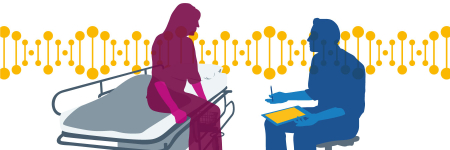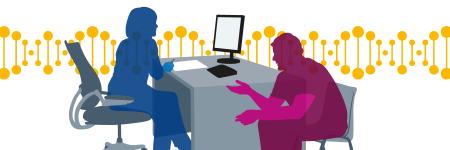Introduction
As genomic technologies have advanced rapidly and genomic testing is integrated into the health service, clinical genetics has seen big changes. Clinical geneticists are more in demand than ever before – not only in the support and management of increasing numbers of patients and families referred to clinical genetics, but also in supporting the widescale transformation of the health service to include genomic and genetic testing on a much larger scale. As geneticists we are at the helm of a revolution in healthcare, tasked with keeping abreast of rapid advances in both testing and understanding.
In this film, Professor Bill Newman, geneticist and professor of translational medicine, explores the transition from genetics to genomics and considers the invaluable role for geneticists in both clinical practice and research.
What do I need to know?
Clinical genetics: then and now
The advent of next generation sequencing and the shift from genetics to genomics has been one of the biggest changes we have ever seen in clinical genetics. The clinical geneticist’s role has transformed in parallel with these changes.
In the past, clinical genetics provided mainly a diagnostic service. The information we provided to our patients would thus inform reproductive choices, allow patients to access surveillance programmes/risk-reducing options, and allow families to access disease-specific information and family support groups.
Now, thanks to the availability and affordability of genomic testing and data, in addition to diagnosing patients with rare disease, we:
- are increasingly able to access a whole range of gene-directed therapies for our patients;
- are supporting colleagues across the health service as genomic testing is ‘mainstreamed’, which means increasing interaction with colleagues, including making decisions about testing, treatment and management in mixed multi-disciplinary teams; and
- are beginning to incorporate polygenic risk scores into practice.
Diagnosing rare disease
Clinical geneticists have never been more in demand. Referrals have increased dramatically, currently around 100,000 new patients each year.
We continue to see the usual range of patients and to seek diagnoses for those with rare diseases and cancer predisposition syndromes. Access to whole genome and whole exome sequencing through the new NHS Genomic Medicine Service (GMS) supports us in this. The introduction of next-generation sequencing has enabled the testing of multiple genes at one time, instead of single gene testing, which was previously the norm. This improves turnaround time for diagnosis. The wider availability of genomic testing also means that testing is increasingly done for predictive purposes as well as for diagnosis, allowing for better management of patients and whole families.
As always we will continue to work with individual families, such as Samantha’s and Claudia’s, to try and establish the cause of undiagnosed rare disease, for which next-generation sequencing is invaluable. Thanks to projects like the 100,000 Genomes Project, this kind of investigation will now become more commonplace across specialties in the NHS due to the availability of next-generation sequencing.
Ours has always been a research-active specialism, but genomic technologies and a deluge of data have also opened up many more opportunities for research.
Gene-directed therapies
With the advent of next generation sequencing, we’ve seen rapid advances in understanding when it comes to the aetiology of disease and potential drug targets. We can now access gene-directed therapies for many of our patients where we weren’t able to before.
If the potential of genomic medicine is to be realised, we need more research into both the genetic mechanisms of disease and effective treatments. There are an increasing number of opportunities for clinical geneticists to use their expertise in this area, as professor Newman’s Gentamicin pharmacogenomics example in our film shows.
There are lots of new developments in this area, for example:
- Gene therapy is being trialled for use in people with Leber’s congenital amaurosis and sickle cell disease.
- Enzyme replacement therapy can be recommended for those with Fabry disease and for those with Mucopolysaccharidosis type I.
- Antisense oligonucleotides can support those with spinal muscular atrophy.
- NICE recommends the use of gene therapy for those with inherited retinal dystrophy due to RPE65 gene variants.
Interesting research is taking place into, as just one example, targeted treatment for acute myeloid leukaemia.
Supporting and working with colleagues
As the NHS’s medical experts in genomics, geneticists have the responsibility of keeping up to date with rapid advances, working out what’s clinically relevant, and communicating and disseminating information to colleagues across other areas of healthcare.
The launch of the new Genomic Medicine Service means that more clinicians have access to genomic tests than ever before, and clinical geneticists have an important role to play in supporting colleagues to adopt genomic testing and make use of genomic data.
In addition, the geneticist’s role in interpreting results from genomic testing – particularly in complex cases – remains vital. For more information, watch our videos with Dr Richard Scott and Dr Andrea George.
The integration of genomics expertise with other medical expertise is crucial in order to make the best use of the technology available and continue to make breakthroughs in research and treatment. Below is an example, kindly provided by Professor Gareth Evans of The University of Manchester, which demonstrates how collaboration between geneticists, oncologists, surgeons and radiologists has improved outcomes for those with Neurofibromatosis type 2.
Case study: Neurofibromatosis type 2 (NF2)
- A woman aged 27, with unilateral hearing loss and tinnitus, is diagnosed with right-sided vestibular schwannoma on brain MRI .
- On account of studies showing that such early onset can be associated with the inherited tumour predisposition syndromes NF2 and schwannomatosis, a spinal MRI was performed.
- The spinal MRI showed two further asymptomatic small nerve sheath tumours on spinal nerve roots.
- Further clinical examination showed no cutaneous features and no cataract on ophthalmic examination.
- Genetic testing was carried out and no germline pathogenic variant was identified in the NF2 or LZTR1 genes on a blood sample .
- As she had a vestibular schwannoma and two other presumed schwannomas, she met the Manchester criteria for a diagnosis of NF2.
- Absence of a germline variant in LZTR1 makes a diagnosis of schwannomatosis exceedingly unlikely and thus a presumed diagnosis of mosaic NF2 was made.
- On serial imaging, her vestibular schwannoma continued to grow, and she was discussed in the joint specialty highly-specialised NF2 service MDT, where surgery was recommended.
- She underwent a complete surgical excision of her tumour, a joint surgical procedure performed by ENT and neurosurgeons. A sample of fresh tumour was sent to the DNA laboratory.
- Genomic analysis of her tumour sample showed a c.586C>T p.Arg196X nonsense pathogenic variant in the NF2 gene at 90% allele frequency, with clear loss of the other NF2 copy on loss of heterozygosity analysis.
- Re-analysis of her lymphocyte DNA sample showed a low-level mosaicism at 1% allele frequency.
- She was advised that she had mosaic NF2 and that the gene change had occurred during development as an embryo.
- The risk to her children was of course of concern to her and we were able to advise this would be around 1%.
- Her two children, aged 10 and 8, were tested and shown not to carry the c.586C>T p.Arg196X variant, and the family was reassured that the children’s risk of NF2 was below 1 in 50,000.
Polygenic risk scores
We know that some people are at higher risk of certain conditions, for example rheumatoid arthritis or high blood pressure, than others due to a combination of multiple genetic variants. Estimating these polygenic risks is complex, but it is a focus for research and may become an important part of the geneticist’s work in the future.
At the moment the main focus is on rare conditions, but clinical geneticists are likely to be involved increasingly in estimating risk for common conditions and developing pathways for patient management – see our case study below.
Case study: polygenic risk scores and breast cancer
- Most women over the age of 40 undergo breast screening every three years, unless they are identified as having a genetic variant which predisposes them to increased risk.
- Early research has shown that for some women, a combination of genetic factors can increase their risk significantly so that it is comparable to those with a single genetic variant.
- Polygenic risk scores are offering promise in terms of providing individualised risk assessment that could lead to more regular screening for women whose risk is deemed to be higher than average. Conversely, some women may need less frequent screening.
Clinical geneticists are invaluable in terms of advancing understanding of genetic risk – especially where it is more complex – not only for cancer but for a whole range of conditions, both rare and common.
More information
For more information, professor Newman recommends the dedicated area for genetics/genomics professionals on the European Society of Human Genetics’ website.
If you are a student and would like to learn more about a career in clinical genetics, or an educator wanting to signpost students to more information, see our genomics careers page.
Learning opportunities
Teaching aids
Clinical resources
Identifying patients
Activity: Taking and drawing a genetic family history
Equip yourself with the knowledge and skills to construct a genetic pedigree.
Activity: Recognising the clinical clues of a genetic condition
Familiarise yourself with the clinical features of a range of genetic conditions



